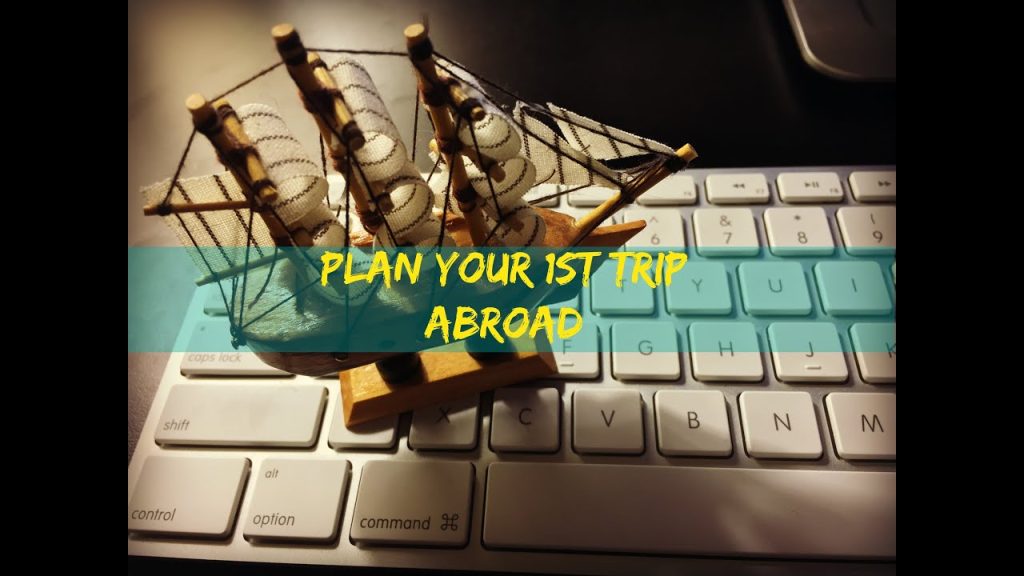How to Plan Your First Trip Abroad: The Complete 2026 Guide
Traveling abroad for the first time is exciting, inspiring, and yes, a little intimidating. There’s a lot to consider—from flights and visas to packing and cultural preparation. The good news is that with the right strategy, your first international trip can be smooth, memorable, and life-changing. This guide will teach you how to plan your first trip abroad in 2026, covering everything from initial research to returning home with unforgettable experiences.

1. Why Planning Matters
Many first-time travelers underestimate the importance of planning. Without a proper plan, you might encounter unnecessary stress, miss opportunities, or spend more money than needed. Planning ensures:
- Financial control: Know your budget and avoid overspending.
- Time efficiency: Maximize your sightseeing and experiences.
- Safety and security: Avoid legal, health, and travel mishaps.
- Confidence and enjoyment: A solid plan lets you focus on fun and exploration.
Even a flexible plan is better than no plan at all, especially for first-time international travelers.
2. Choosing the Right Destination
The first step in learning how to plan your first trip abroad is selecting your destination.
a. Define Your Goals
- Adventure or relaxation? Decide whether you want sightseeing, nature exploration, or a beach escape.
- Cultural immersion: Do you want to experience local traditions, festivals, or cuisine?
- Budget-friendly vs. luxury travel: Some destinations are inherently more affordable than others.
b. Consider Travel Logistics
- Flight duration: For your first trip, shorter flights might be less stressful.
- Language: Consider whether you’re comfortable with a destination where you don’t speak the language.
- Safety: Research travel advisories and crime statistics.
c. Seasonal Factors
- Peak season may have good weather but higher prices and crowds.
- Off-season can be cheaper but may come with unpredictable weather or limited services.
3. Setting a Realistic Budget
Budgeting is essential before going abroad for the first time.
a. Flight Costs
- Compare flights using tools like Skyscanner, Google Flights, or Kayak.
- Flexible dates can save hundreds.
- Consider nearby airports for cheaper alternatives.
b. Accommodation
- Options range from hostels and budget hotels to vacation rentals and boutique hotels.
- Consider location, safety, and proximity to attractions or transportation.
c. Daily Expenses
- Food, transportation, entertainment, and shopping.
- Research local prices using travel blogs, forums, and apps.
d. Emergency Fund
- Set aside at least 10–20% of your total budget for unexpected events.
4. Booking Flights and Accommodation
Once your budget is set, it’s time to make reservations.
a. Flights
- Book early for better deals, especially during peak seasons.
- Consider round-trip tickets unless planning open-ended travel.
- Sign up for alerts to track fare drops.
b. Accommodation
- Use trusted booking platforms with verified reviews (Booking.com, Airbnb, Hostelworld).
- Look for flexibility in cancellations, especially for your first international trip.
- Consider amenities like Wi-Fi, breakfast, or laundry facilities.
5. Travel Documents and Visas
Before going abroad, make sure all documentation is prepared.
a. Passport
- Must be valid for at least six months after your return date.
- Keep both physical and digital copies in case of loss.
b. Visas
- Check whether your destination requires a tourist visa or other travel permissions.
- Some countries allow visa-free entry or e-visas that can be applied online.
c. Other Essential Documents
- Travel insurance certificate
- Flight tickets and accommodation confirmations
- Emergency contacts and local embassy info

6. Health and Safety Preparation
Staying healthy and safe is crucial for a stress-free first trip abroad.
a. Health Precautions
- Research recommended vaccinations and medications.
- Carry a travel health kit with basic medicines.
- Know the location of local hospitals or clinics.
b. Travel Insurance
- Covers accidents, theft, and medical emergencies.
- Look for insurance that allows emergency evacuation if necessary.
c. Safety Tips
- Research local crime trends and common scams.
- Keep valuables secure; consider using money belts or hotel safes.
- Share your itinerary with friends or family back home.
7. Planning Your Itinerary
A well-planned itinerary ensures you see the highlights without feeling rushed.
a. Balance Must-See Spots with Relaxation
- Identify top attractions but leave free time for spontaneous adventures.
- Factor in travel time between locations.
b. Book Popular Activities in Advance
- Museums, tours, or shows may sell out quickly, especially in peak seasons.
- Use online booking platforms to secure spots early.
c. Local Experiences
- Include activities that immerse you in the culture, like cooking classes, local markets, or festivals.
- Ask locals for recommendations—they often know hidden gems.
8. Packing Smart
Packing is a critical step for a stress-free first trip abroad.
a. Essentials
- Travel documents, passport, tickets
- Clothing suitable for climate and culture
- Chargers, adapters, and portable battery packs
b. Travel Light
- Avoid overpacking; aim for versatile clothing items.
- Consider using packing cubes to stay organized.
c. Health & Hygiene Items
- Travel-size toiletries, masks, hand sanitizer
- First aid kit and any prescription medications
9. Preparing for Cultural Differences
Understanding local culture enhances your travel experience.
a. Language
- Learn basic phrases: greetings, thank you, directions, and emergency words.
- Translation apps like Google Translate can be lifesavers.
b. Social Etiquette
- Research local customs and social norms.
- Be respectful of dress codes, gestures, and public behavior.
c. Money and Tipping Customs
- Some countries tip regularly, others include service charges automatically.
- Familiarize yourself with local currency to avoid confusion.
10. Technology for Your First Trip Abroad
Technology can make traveling abroad smoother and safer.
- Navigation apps: Google Maps, Citymapper, or Maps.me
- Travel apps: TripIt, Hopper, or Skyscanner for planning and bookings
- Language tools: Duolingo, Google Translate
- Finance apps: Wise, Revolut, or PayPal for currency management

11. Mental Preparation
First-time international travel can be overwhelming.
- Be ready for minor inconveniences like flight delays or language barriers.
- Embrace flexibility—unexpected experiences often become your favorite memories.
- Stay open-minded and patient when interacting with locals.
12. Emergency Preparedness
Even the best plans may need adjustments.
- Know local emergency numbers for police, medical services, and fire.
- Keep a list of your country’s embassy or consulate contacts.
- Have backup payment methods and travel documents stored digitally.
13. Returning Home
The journey doesn’t end when you return.
- Reflect on your experiences: journal or create a photo album.
- Share your travel tips with friends or online communities.
- Consider how this trip can inspire your next international adventure.
14. Final Thoughts
Learning how to plan your first trip abroad takes time, research, and preparation, but it’s worth every effort. A well-prepared first trip sets the foundation for many future adventures, reduces stress, and allows you to fully enjoy the excitement of exploring a new country.
Remember, travel is not just about seeing new places—it’s about discovering new perspectives, connecting with different cultures, and creating memories that last a lifetime.